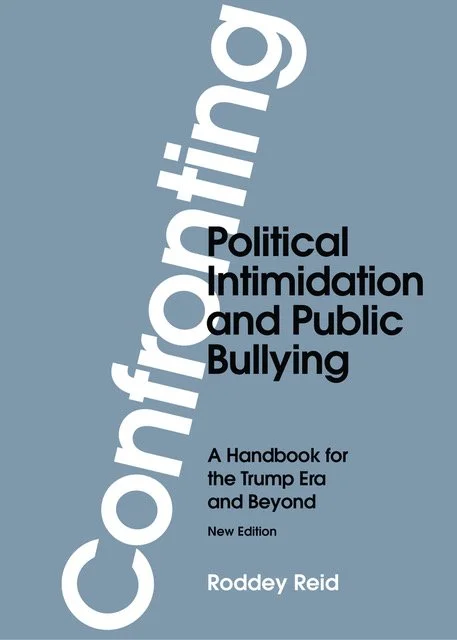Blog
**NON-AMAZON E-BOOK RELEASE** on Bookshop.org
New Publication - "The Way We Live Now,” Konch Magazine, edited by Ismael Reed & Tennessee Reid, Fall 2025 Issue.
Ralph Nader’s Weekly Commentary on “Confronting Political Intimidation and Public Bullying” (Blog: Oct. 17, 2025)

Interview with Ralph Nader on the Ralph Nader Radio Hour on new book, “Confronting Political Intimidation and Public Bullying” - released No Kings Day, Sat., Oct. 18
Confronting Political Intimidation and Public Bullying (New Edition): Table of Contents
Preface: New Edition
Since the kickoff of the 2016 presidential campaign, a climate of fear and intimidation has dominated national life in the United States to a degree rarely seen before, poisoning our politics and reaching into our very relationships with friends, co-workers, and neighbors.

UnSafe at Any Distance: Todd Haynes' Visual Culture of Health and Risk - "Safe"
“In the world SAFE claims for Carol, itself, and viewers, there are no safe social spaces, no safe healthcare practices, no safe critical perspectives, and, lest we forget, no safe cinema.”
Fear and Loathing in the Democratic Primaries: #bullying, #gaslighting, and #wolfpackjournalism
What follows are some thoughts on the deteriorating political climate within and outside the Democratic Party.
Bernie Sanders Interview with Rachel Maddow, March 4, 2020: closing words
Here are the concluding minutes of the interview. A dry, verbal excerpt from the full interview doesn't quite capture the flow of leading questions and Sander's responses and how Sanders's maintained a dignified posture throughout with a hostile host.
(Compare with Maddow's warm, sympathetic interview with Elizabeth Warren the following day.)
Mike Bloomberg's Corporate Raid on the Democratic Party
Should the Democratic establishment think nominating Bloomberg will not only defeat Trump but also help preserve its control over the party, Democratic leaders may be in for a nasty surprise.
Mike Bloomberg's Corporate Raid on the Democratic Party
Should the Democratic establishment think nominating Bloomberg will not only defeat Trump but also help preserve its control over the party, Democratic leaders may be in for a nasty surprise.
